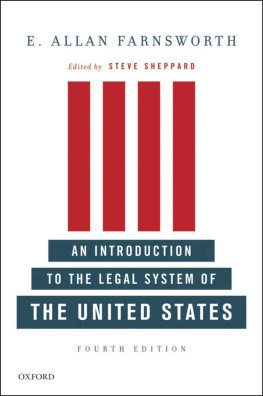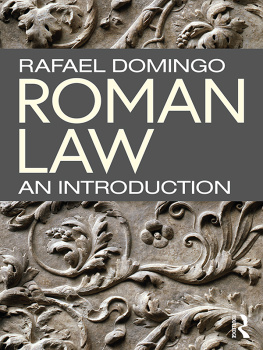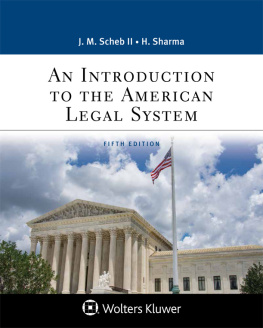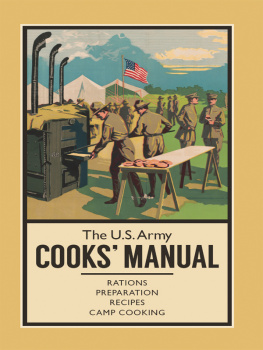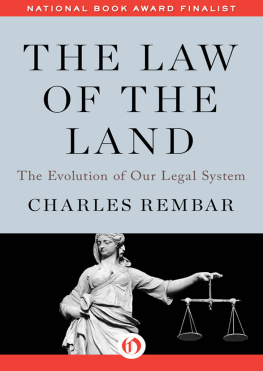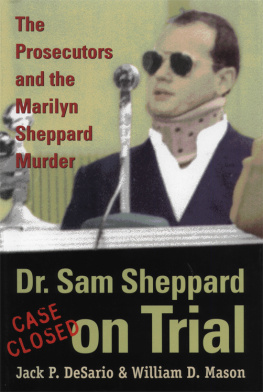AN INTRODUCTION TO THE LEGAL SYSTEM OF THE UNITED STATES
FOURTH EDITION

AN INTRODUCTION
to the Legal System
of the United States
FOURTH EDITION
E. Allan Farnsworth
Edited by
Steve Sheppard
Originally Published for the
Parker School of Foreign and Comparative Law
Columbia University in the City of New York


Oxford University Press, Inc., publishes works that further Oxford Universitys objective of excellence in research, scholarship, and education.
Oxford New York
Auckland Cape Town Dar es Salaam Hong Kong Karachi Kuala Lumpur Madrid Melbourne Mexico City Nairobi New Delhi Shanghai Taipei Toronto
With offices in
Argentina Austria Brazil Chile Czech Republic France Greece Guatemala Hungary Italy Japan Poland Portugal Singapore South Korea Switzerland Thailand Turkey Ukraine Vietnam
Copyright 2010 by Oxford University Press, Inc.
Published by Oxford University Press, Inc.
198 Madison Avenue, New York, New York 10016
Oxford is a registered trademark of Oxford University Press
Oxford University Press is a registered trademark of Oxford University Press, Inc.
All rights reserved. No part of this publication may be reproduced, stored in a retrieval system, or transmitted, in any form or by any means, electronic, mechanical, photocopying, recording, or otherwise, without the prior permission of Oxford University Press, Inc.

Library of Congress Cataloging-in-Publication Data
Farnsworth, E. Allan (Edward Allan), 1928
An introduction to the legal system of the United States / E. Allan Farnsworth; edited by Steve Sheppard. 4th ed.
p. cm.
Includes bibliographical references and index.
ISBN 978-0-19-973310-1 ((pbk.) : alk. paper)
1. LawUnited States. I. Sheppard, Steve, 1963 II. Title.
KF387.F3 2010

1 2 3 4 5 6 7 8 9
Printed in the United States of America on acid-free paper
Note to Readers
This publication is designed to provide accurate and authoritative information in regard to the subject matter covered. It is based upon sources believed to be accurate and reliable and is intended to be current as of the time it was written. It is sold with the understanding that the publisher is not engaged in rendering legal, accounting, or other professional services. If legal advice or other expert assistance is required, the services of a competent professional person should be sought. Also, to confirm that the information has not been affected or changed by recent developments, traditional legal research techniques should be used, including checking primary sources where appropriate.
(Based on the Declaration of Principles jointly adopted by a Committee of the
American Bar Association and a Committee of Publishers and Associations.)
You may order this or any other Oxford University Press publication by
visiting the Oxford University Press website atwww.oup.com
To Patricia
CONTENTS
EDITORS INTRODUCTION
The Study of the Law of the United States
Welcome to the study of American law. For nearly half a century, An Introduction to the Legal System of the United States has been a leading basic text on American law, read both by students in the United States and by students and lawyers around the world. Earlier editions of this book have been translated into twenty languages, and it has been studied in hundreds of universities, colleges, and schools in every corner of the globe.
This book is popular because it is clear in describing the law, and it makes sense to a person who has not studied law before. Its simplicity is not simpleminded, however, and American law is presented rich with history and in its many categories, with an eye to explain its differences from the other legal systems of the world, as well as to make it sensible when either history or good sense is its origin. Another reason for its popularity, however, is the unusual grace and influence of its author, the great contracts lawyer and theorist, Allan Farnsworth.
Allan Farnsworth, the Law, and This Book
Edward Allan Farnsworth was born in Providence, Rhode Island, in 1928, where his father, Harrison Farnsworth, was on the physics faculty of Brown University. Harrison became especially well known for the study of atomic surfaces, a tradition that Allan initially followed, taking his bachelors degree in applied mathematics from Michigan in 1948 and a masters in physics from Yale in 1949. He had planned to take a doctorate in physics but changed to law, later saying he changed his course of study at his fathers suggestion because the younger Farnsworth wanted to do something which had a human element in it as opposed to an inanimate object.
Farnsworth attended Columbia Law School in New York, which he chose over Harvard and Yale because its midterm grades would allow him to see if he could succeed in legal study. He did succeed, earning the unusually high grades required to be named a Kent Scholar (including perhaps the only A++ in the schools history) and winning the schools John Ordonaux Prize, given to one graduating law student for outstanding general proficiency in legal study. He graduated in 1952, entering the U.S. Air Force, becoming a captain in the JAG Corps, posted as a judge advocate to Mitchell Field on Long Island. Aside from his Air Force duty, he also spent six months working full time for the Central Intelligence Agency, where he appears to have made many interesting friends. He got a taste of private practice in a San Francisco law firm before joining the Columbia law faculty in 1954. He was twenty-six years old, the youngest teacher in the school, a bit of a tenuous position, but he would stay through a highly celebrated career, becoming the Alfred McCormack Professor of Law in 1970.
Working alongside his mentor, the contracts maven Edwin Patterson, Farnsworth taught Commercial Transactions, Admiralty, Legal Aspects in Foreign Trade, and Contracts and began to produce not only extraordinary scholarship but also very attractive teaching materials, including his casebooks, which are still in print in subsequent editions: Negotiable Instruments (1959), Contracts (1965), and Commercial Law (1965).
A brilliant, funny, and passionate teacher, Farnsworth was revered by Columbia students as much for his engagement with them as for the unrelenting brilliance of the class, though this could be daunting. On the first day of the course, every student found the teacher had committed to memory the students name and home town; was able to address each student by name on sight; and throughout the year, would call on any student to discuss a case that had a mention of the students home city. Farnsworths slide shows, culture, and seemingly inexhaustible energy were evident both in class and out, and his mentoring of student research, engagement in student life, and squash game were the stuff of law-school legend.
Next page
